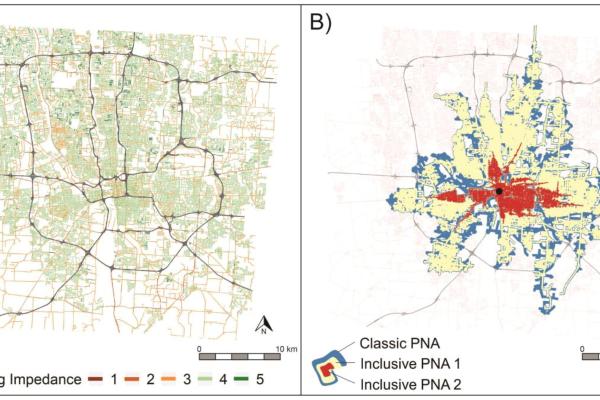Research: Inclusive Accessibility: Integrating Heterogenous User Mobility Perceptions into Space-Time Prisms

In August, an article was published in the journal Annals of the American Association of Geographers co-authored by former CURA GRA, Armita Kar, CURA Faculty Affiliate, Huyen Le, and CURA Director, Harvey Miller.
Abstract
Travelers’ day-to-day mobility depends on their perceptions, experiences, and personal characteristics. Many accessibility measures overlook perceptual factors and mainly consider space–time limitations of mobility, overestimating travelers’ potential mobility. We introduce a novel inclusive accessibility concept that advances time-geographic accessibility measures in light of travel behavior theories. We conceptualize inclusive accessibility as a subset of the classic space–time prism (STP) that incorporates hard constraints (e.g., limited infrastructure and services and time) and soft constraints (e.g., perceptions of safety and comfort toward the built environment and infrastructure and travel time preferences). We collected survey data on individual-level mobility perceptions and applied machine learning algorithms to predict personalized soft constraints for walking. Considering public transit and walking, we model and compare three network-based STPs: classic STP with hard constraints, inclusive STP with soft spatial constraints, and inclusive STP with soft spatial and temporal constraints. Our method demonstrates heterogeneities in individuals’ mobility perceptions. We illustrate that the individual’s level of accessibility shrinks substantially as we approach more conservative measures that include travel perceptions. Our method highlights the differences between travelers’ physically and psychologically accessible space depending on their travel choices and exposure.
Authors: Kar, A., Le, H. T. K., & Miller, H. J. (2023). Inclusive Accessibility: Integrating Heterogenous User Mobility Perceptions into Space-Time Prisms. Annals of the American Association of Geographers, 1–24. https://doi.org/10.1080/24694452.2023.2236184
